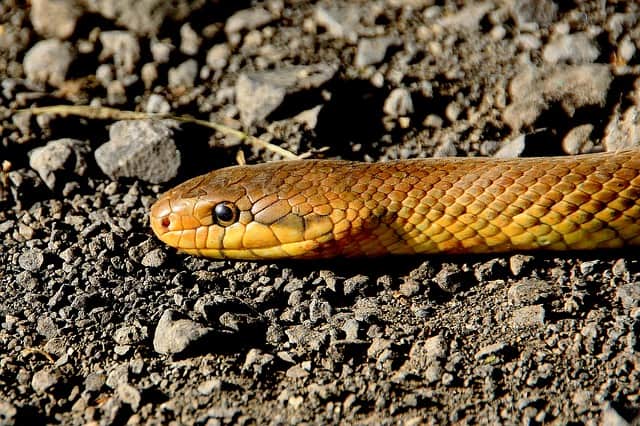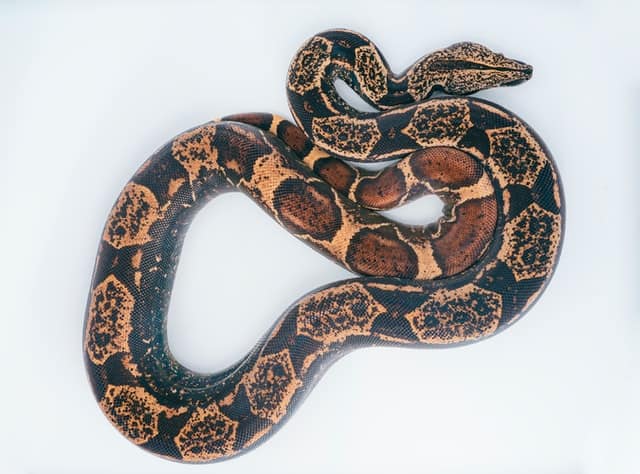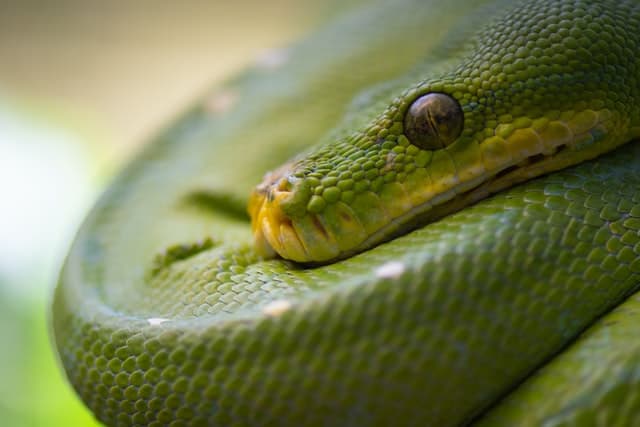
Snakes are not actually blind. They have a limited sense of sight, but it is their other senses that help them navigate their environment effectively. Snakes use their keen sense of smell, touch and hearing to find food, mates and shelter.
Table of Contents
There are many different types of snakes, and each one has a different visual system that allows them to see in different ways. Some snakes can’t see at all but rely on their other senses to navigate their way around. Other snakes have great eyesight and can spot prey from a long distance. Snakes use their vision to find food, avoid predators, and navigate their surroundings.
Some snakes, such as the pit vipers, have heat-sensing pits on their faces that allow them to detect the body heat of their prey. This allows them to strike accurately even in complete darkness. Other snakes, such as the boa constrictor, have excellent eyesight and can see in colour. They use their vision to track their prey and strike with precision.
Some snakes, such as the blind snake, have no eyes at all and rely entirely on their sense of touch to navigate their way around. These snakes are often found in burrows or other dark places where vision is not necessary.
Regardless of the type of visual system, a particular snake has, all snakes rely heavily on their sense of smell to find food and avoid predators. Snakes use their tongues to collect scent particles from the air and bring them into contact with a sensory organ called the Jacobson’s organ, which is located on the roof of the mouth. This allows snakes to “taste” the air and detect the presence of prey or predators.
Overall, snakes have a complex visual system that allows them to see in different ways depending on the species and their surrounding environment.
Can Snakes Feel Things?

Yes, snakes can feel things. They have receptors on their skin that allow them to detect various stimuli, including pressure, temperature, and vibration. This allows them to sense their environment and avoid potential predators or threats. Some snakes also have heat-sensing pits located between their eyes and nostrils that help them locate warm-blooded prey.
What do Snakes See?

Have you ever wondered what snakes see? While we humans rely heavily on our sight, snakes have a very different way of perceiving the world. Snakes can see details, but they also have a built-in UV filter. This allows them to see clearly, but with a yellow tint. The ability to see UV light is especially useful for hunting during the daytime.
Snakes that hunt at night typically have poorer vision, as they rely more on their sense of smell and heat-sensing pits to locate prey. Whether they are stalking their next meal or simply soaking up some sun, snakes have an interesting way of seeing the world around them.
Nocturnal Snakes

It’s a common misconception that snakes are blind. In fact, most snakes can see quite well, especially during the day. However, there are some snakes that are active at night, and these snakes have quite different visions than their daytime cousins.
Nocturnal snakes don’t have a UV filter in their eyes means they can’t process light in the same way as diurnal (daytime) snakes. As a result, they’re not very good at seeing during the day. Instead, they rely on their sense of smell to hunt.
This is why you’ll often see snakes with their tongues out they’re using their tongues to smell the environment around them. So next time you see a snake at night, don’t be too quick to assume it’s blind. It may just be getting by with a different set of senses than you’re used to.
Can Snakes See Colour?

Did you know that snakes can see colour? It’s true! However, they don’t see colour the same way that humans do. Humans are trichromatic, which means that we see three primary colours: red, blue, and green. Snakes, on the other hand, are dichromatic. This means that they can only see two colours: blue and green.
As a result, snakes are missing out on many of the colours in the spectrum. However, they are sensitive to ultraviolet light, which allows them to see things that humans can’t. So next time you’re out on a hike and see a snake slithering through the grass, remember that it’s seeing the world in a different way than you are!
Do Snakes Have Heat Sensor Vision

Snakes are often associated with cold-bloodedness, but some species can actually see heat. This ability, known as thermoreceptors, helps snakes to find warm-blooded prey like degus, even in the dark. While all snakes are sensitive to temperature changes, not all snakes have heat sensor vision. This ability is most common in vipers, a group of snakes that includes rattlesnakes and copperheads.
Vipers use a specialized heat sensor, located between their eyes and nostrils, to detect infrared radiation. This allows them to “see” the heat signatures of warm-blooded animals, even in complete darkness. As a result, thermoreception gives vipers a significant advantage in the hunt for food. While other snakes must rely on sight or smell to locate their prey, vipers can simply follow the heat trail.
In addition to helping snakes find food, thermoreception also plays an important role in regulating body temperature. By “seeing” the temperature of their surroundings, snakes can adjust their behavior to stay warm or cool as needed. For example, if a snake is basking in the sun and begins to overheat, it will move to a cooler spot to avoid becoming too hot.
Are There Blind Snakes?

The Brahminy blind snake is a small, non-venomous snake that is often mistaken for a worm. It is a fossorial snake, which means it burrows under the ground. The Brahminy lives like an earthworm and only grows up to four inches in length. The Brahminy is native to Africa and Asia and is often found in agricultural areas, where it helps to control pests.
Although the Brahminy is not harmful to humans, it can be a nuisance if it enters your home. If you find a Brahminy in your house, the best thing to do is to gently capture it and release it outside.
Are Blind Snakes Less Likely to Live?

In a recent study, scientists have found that blindness has little impact on how long snakes can live. The study was conducted on tiger snakes on the coast of Western Australia, and it was found that even though some of the snakes had lost their vision due to fights, they continued to grow normally. This suggests that blindness does not necessarily have a negative impact on a snake’s lifespan.
The findings of this study are important because they challenge the common belief that blindness is a disadvantage for animals. Blindness may not be as big of a problem for snakes as we thought, and this could have implications for other animals as well. further research is needed to determine whether or not this is true for other species of animals, but the findings of this study are an important first step.
Why Do Snakes Stick Out Their Tongues?

Snakes are unique creatures that have many interesting features. One thing that snakes are known for is their ability to stick out their tongues. But why do they do this?
Interestingly enough, snakes stick out their tongues as a result of their bad eyesight! Since snakes cannot see well, they have developed another sense- their sense of smell! They use their tongue to get a sense of their surroundings.
Snakes will “taste” the air around them to get a better idea of their surroundings. Snakes have an excellent sense of smell, and they use their tongue to pick up scents in the air. This helps them to identify prey, avoid predators, and find mates.
Conclusion

Though some snakes are born blind, and others develop blindness due to age or injury, the vast majority of snakes have poor vision. This is because snakes evolved from land-dwelling lizards, who needed keen eyesight to spot prey and escape predators. Over time, however, snakes became more specialized for life in the dark, damp depths of the earth, where vision is much less important.
As a result, their eyes became smaller and less sensitive to light. In addition, many snakes have a “blind spot” directly in front of their head, which makes it difficult for them to see anything directly in front of them.
Despite their poor vision, snakes are very successful predators. This is because they have developed other ways to find and catch their prey. For instance, most snakes have an excellent sense of smell, which they use to track down food. In addition, some species of snake (such as vipers and pythons) can sense heat, which allows them to “see” their prey even in complete darkness.
As a result, poor vision is not a hindrance for most snakes – they have simply evolved other ways to make up for it.
